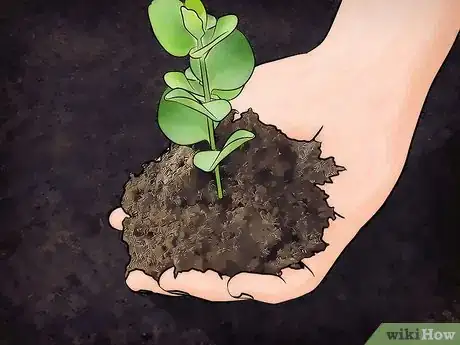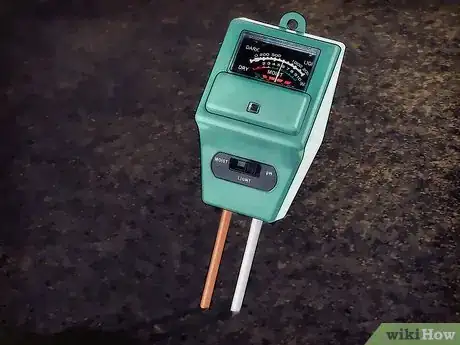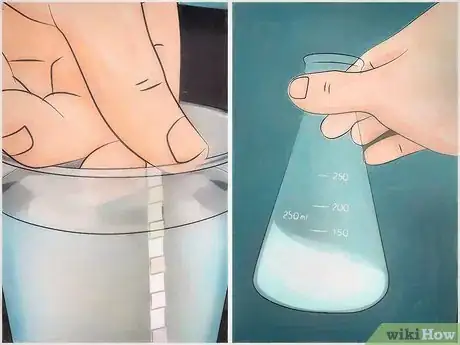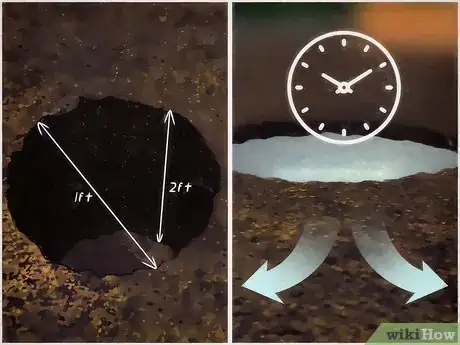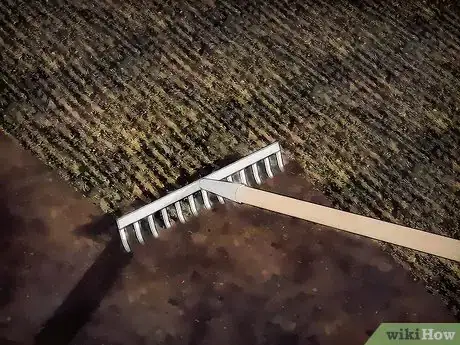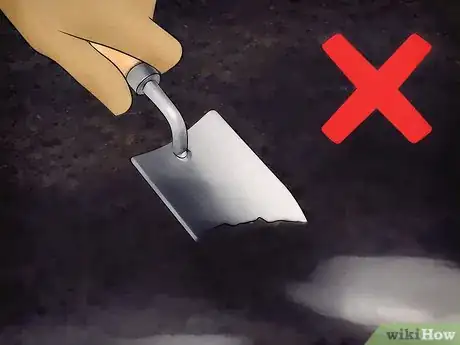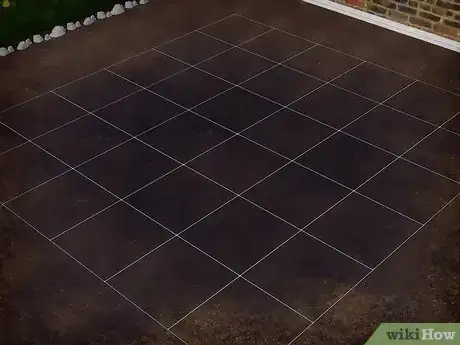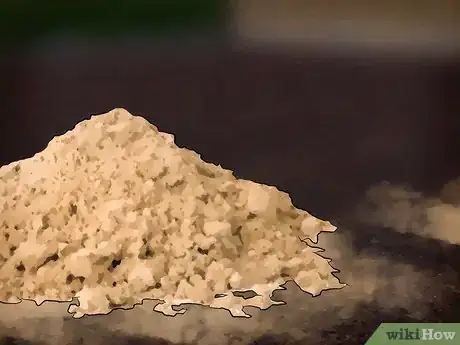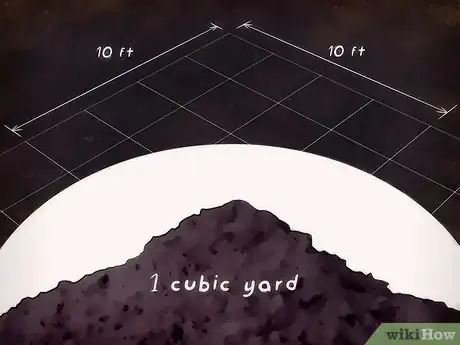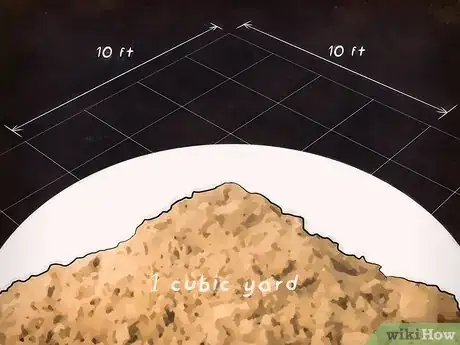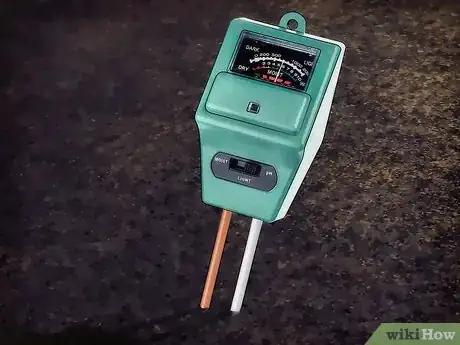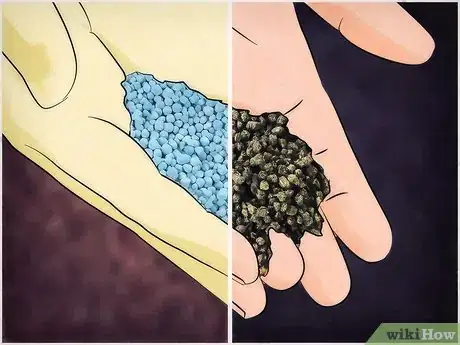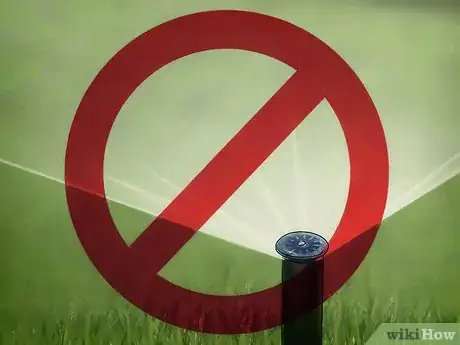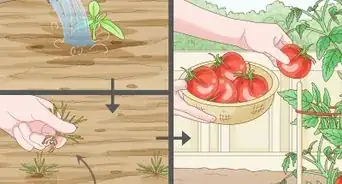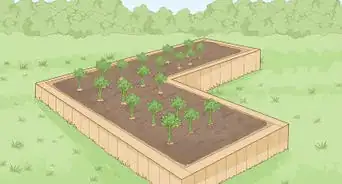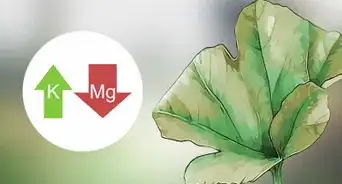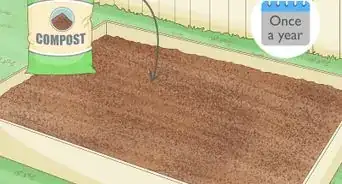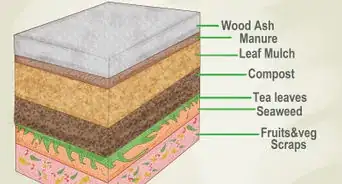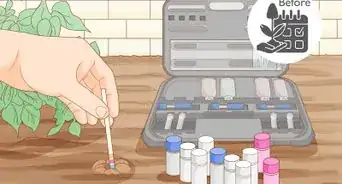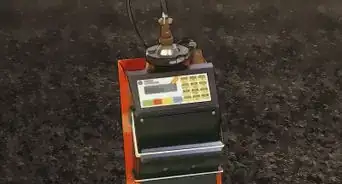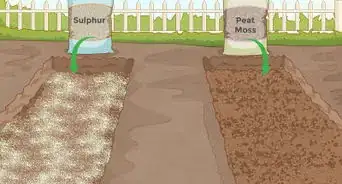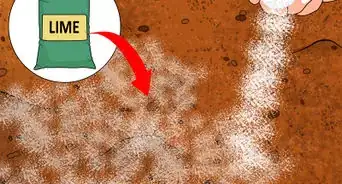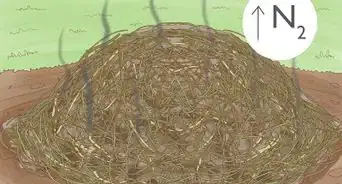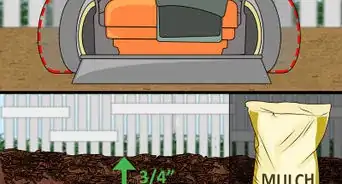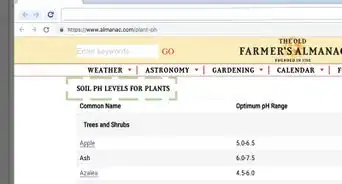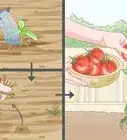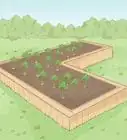This article was co-authored by Andrew Carberry, MPH. Andrew Carberry is a Food Systems Expert and the Senior Program Associate at the Wallace Centere at Winrock International in Little Rock, Arkansas. He has worked in food systems since 2008 and has experience working on farm-to-school projects, food safety programs, and working with local and state coalitions in Arkansas. He is a graduate of the College of William and Mary and holds a Masters degree in public health and nutrition from the University of Tennessee.
wikiHow marks an article as reader-approved once it receives enough positive feedback. This article received 17 testimonials and 98% of readers who voted found it helpful, earning it our reader-approved status.
This article has been viewed 273,900 times.
Clay soil is a very dense substance that can cause major drainage problems for your plants. This soil is common to many parts of the world, limiting what homeowners, gardeners, and farmers can grow. However, you can amend or alter the soil to produce a richer soil more suitable for planting.
Steps
Preparing to Amend
-
1Look into clay-tolerant plants. Before you begin, consider using plants that tolerate clay soil, as this eliminates the need to amend the soil. Switchgrass, asters, Russian sage, and hostas are all good options.[1]
- On the other hand, many plants will struggle to thrive in clay soil, regardless of how effectively you amend it. For example, choosing plants that like very dry or excessively acidic soil can be an uphill battle.
-
2Test the pH of your soil. The first step in amending your soil is to diagnose your soil's pH. There are several ways to do this, ranging from DIY strip tests to commercial testing kits. If you're a serious grower, consider visiting your local county extension and get a soil testing kit straight from the source.
- Find your local county extension office and get a soil testing kit. Directions for use it are included in the package. Mail directly to your state laboratory. It may take a little longer than normal to get the results back in the spring because of the volume of requests. Your results will provide a detailed analysis of your soil composition, the pH, and which amendments you may need to add to bring your soil up to optimum growing conditions.
- pH is a scale of how acidic or alkaline a material is. The scale goes from 0 to 14, with 0 being very acidic, 7 being neutral, and 14 being very basic.
Advertisement -
3Test the pH of your water. Amending your soil to become more acidic, for example, won't do anything if your water is very alkaline and you're planning on using it to water your plants. Don't get lazy — test the pH of your water as well as your soil. Most water is slightly alkaline, which may or may not be good depending on what you are trying to grow.
- If your water is basic, it is "hard" water. Hard water is generally what groundwater ends up being, mainly because it doesn't erode the pipes that contain it and transport it around. Acidic water is "soft." Soft water is achieved by removing calcium and magnesium from the water.
- If you want to stay on the safe side, get pure, filtered water. Pure, filtered water is about as neutral as you'll get. This way, the introduction of water won't affect the pH of your soil, although it can quickly get expensive.
-
4Try a percolation test. A percolation test will help you determine whether and how well your soil drains. Dig a hole that's 2 feet (0.61 m) (.6m) deep and 1 foot (0.30 m) (.3m) wide. Fill the hole with water and wait for it to drain completely. Now fill it a second time, keeping track of how long the second water hole drains:
- If it takes less than 12 hours to drain, you can safely plant anything that requires well-drained soil.
- If it takes between 12 and 24 hours for the hole to drain, you can safely grow plants that tolerate heavy soil or clay environments.
- If it takes more than 24 hours for the hole to drain, you can pretty much only plant trees that can hold up to occasional flooding, like balsam fir or red maple.
-
5Till areas without topsoil. If you have no topsoil at all, tilling can break up the dense soil for an easier growing medium. Till down to at least 6 inches (15.2cm), and preferably about 8 inches (20.3cm). Extend out a little past the planting area. This will ensure that the roots have extra growing room if they need it.
- If you don't have a tiller, you can use a broadfork, pitchfork, or shovel to loosen and aerate the soil. The advantage of the broadfork is that you're not disturbing the essential soil structure, which helps the microorganisms that call the soil their home. The downside to just aerating the soil instead of tilling it is that dense lumps of clay may still exist after soil loosening.
- If you have topsoil with clay underneath, do not till. In this environment, tilling will make the problem worse by mixing clay in with your topsoil.
Amending Your Soil
-
1Do not work on clay soil when it is wet. Wait for a dry spell to start amending the clay soil. Clay that is wet is much easier compacted, making the amending a lot more difficult. You'll need all the help you can get amending clay, so be sure to keep this simple but profound trick in mind.
-
2Prepare to amend a wider section of soil than you'll actually need. Measure out the space that you'll be amending. Ideally choose a large space to amend. A small amended area might be a haven for your plants, but when their roots start expanding past the small area and hit the clay, they'll double back into the amended area quickly. This causes problems with root system development.
-
3Amend the soil depending on the results of the test. Most clay soils are on the alkaline side, meaning that you'll probably want to lower the pH of the soil. There are several ways to do this. The most common substances to add to clay soil are builder's sand, gypsum, composted manure, compost or other coarse organic material.
- Builder's sand and gypsum allow for better water drainage and increased air pockets, as they force the particles in the clay apart. It is very important to use coarse sand such as builder's sand, not fine-textured sand such as play sand, as this will make the situation worse.
- Organic matter will help the plants get the proper nutrients and also help build increased humus (not to be confused with "hummus") with additional microbes that are the building blocks of good soil. Additionally, they will help lower the pH of the soil, acidifying it.
- Try shooting for an equal mix of coarse sand (builder's sand) and coarse organic material. Because you're going to be spreading this mix over a large area, you will need bulk quantities: Instead of thinking in terms of square feet, think in terms of cubic yards--one cubic yard of material will provide a three-inch layer on 100 square feet. Purchase in bulk at a landscape supply store or a feed store; buying by the bag is much, much more expensive.
-
4Start off by spreading one cubic yard of organic material on top of every 10-foot by 10-foot area. Start with organic material first. After being integrated with the clay soil, the material will begin to break down and become effectively invisible. Don't worry — it's still there doing its job.
-
5Next, spread one cubic yard of builder's sand over the same 10' x 10' area. Mix it in thoroughly with the organic material and the clay by using a tilling machine. If you do not have one, you can rent one inexpensively at your local hardware renter store.
- If good quality builder's sand is not readily available, you may want to chose to try either green sand or gypsum as an alternative to the sand. They are more expensive, but act in the same manner to force the clay particles apart allowing to addition of more water and air.
- Gypsum has been found to be particularly effective in areas where the soil has a high salt concentration.
-
6Continue to monitor the pH of the soil frequently. Closely watch the change in pH. Most plants can't tolerate drastic changes in pH or soil conditions, so you'll want to be reasonably sure that the pH of your soil has stopped changing drastically before you plant.
-
7Acidify the soil further, if necessary. Clay is usually very alkaline to begin with.[2] For this reason, you may find yourself wanting to alter the pH of the soil to make it more acidic. There are several ways you can do this:
- By adding an ammonia-based fertilizer
- By adding elemental sulfur or iron sulfate
- By adding cottonseed meal, sphagnum moss, or other compost
-
8Avoid automatic water systems for your plants. Because clay soil is so good at retaining moisture, automatic watering systems may drown your plants if not paid special attention to. Ditch the sprinklers, save some money, and look at the plants themselves to determine how much water they plants need.
Community Q&A
-
QuestionI have grass planted in heavy clay soil. It is near the forest, so I have the availability of leaves to mulch over it to add compost. How can I renovate the new lawn I have without tilling the soil?
 NinoxTop AnswererYou can grind the leaves and spread it all over the lawn. For a better result, do it from late autumn to early spring.
NinoxTop AnswererYou can grind the leaves and spread it all over the lawn. For a better result, do it from late autumn to early spring. -
QuestionWe grow a garden every year and we tried to get the ground right. It's hard, clay is something that's really difficult to grow in, especially sweet potatoes. What can we do?
 NinoxTop AnswererTo grow sweet potatoes you need a basic light soil. You can improve it by adding limestone and small amounts of sand. You can also add humus to help the plant.
NinoxTop AnswererTo grow sweet potatoes you need a basic light soil. You can improve it by adding limestone and small amounts of sand. You can also add humus to help the plant. -
QuestionHow do I amend clay soil if I don't have money?
 Community AnswerYou can do so with shredded newspaper. Place the paper in trenches cover with soil.
Community AnswerYou can do so with shredded newspaper. Place the paper in trenches cover with soil.
Things You'll Need
- Tiller
- Organic material or compost
- Horticultural sulfur (if pH 7+) or lyme (if pH 6-)
- Builder's sand, blood meal, or green sand
References
About This Article
To amend clay soil, add builder's sand and gypsum to create more air pockets and increase the soil's drainage. You can also add organic matter, like compost or manure, to increase the nutrients in the soil. When laying your materials, aim for an equal mix of coarse sand and coarse organic material for optimum drainage and nutrients. After you've amended the soil, continue to monitor the pH balance to ensure that the proper levels continue to be met, or else continue to acidify the soil as needed. To learn how to make your soil more acidic, keep reading!
